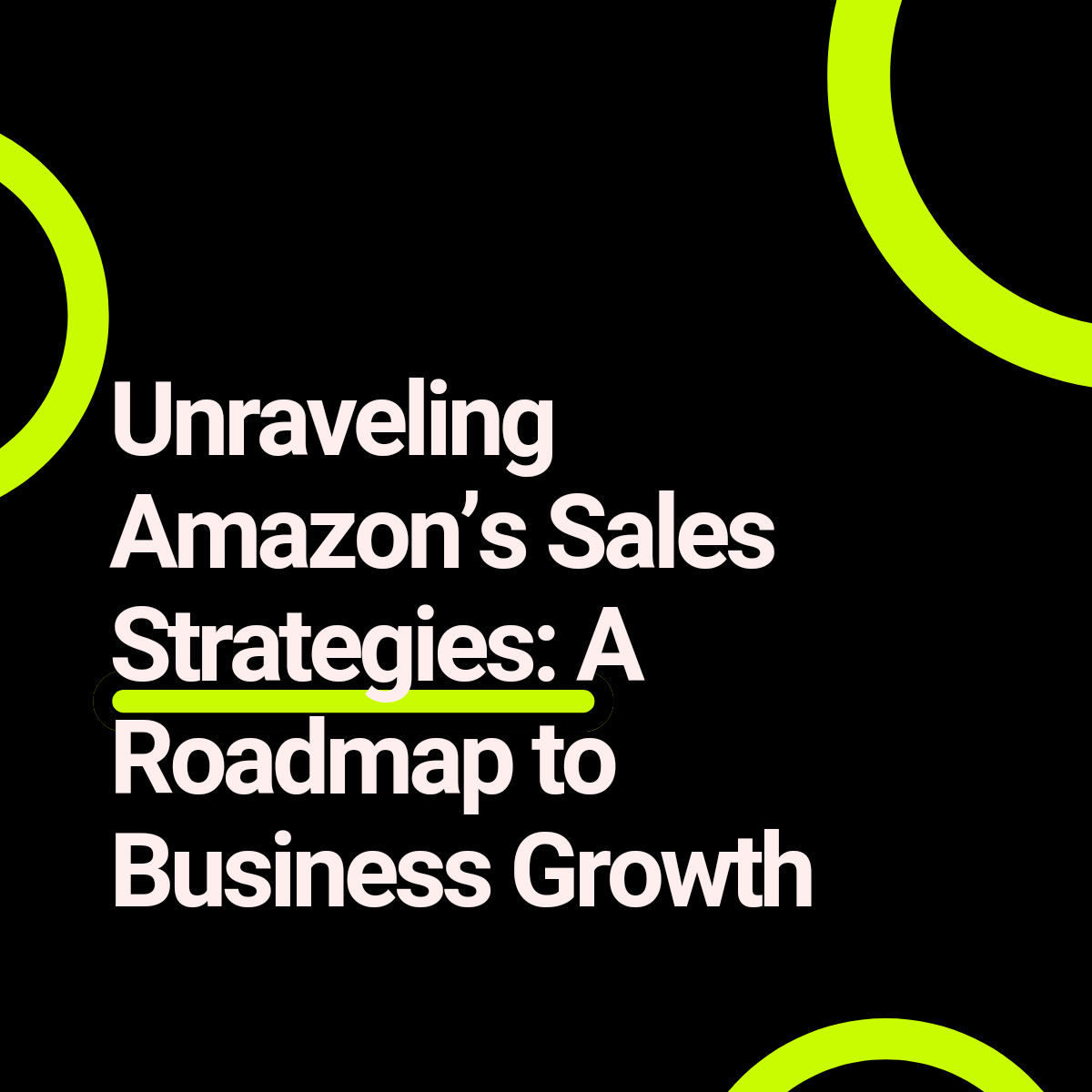In e-commerce giants, Amazon stands tall as a powerhouse, continuously setting the bar for innovation and sales strategies. For businesses seeking growth and success in the digital marketplace, understanding and leveraging Amazon’s sales strategies is paramount.
I. Introduction to Amazon’s Sales Strategies
A. Overview of Amazon’s Dominance
Amazon’s rise to prominence in the e-commerce landscape is nothing short of remarkable. With a relentless focus on customer experience, technological innovation, and data-driven strategies, Amazon has transformed the way people shop online. Understanding the core principles of Amazon’s sales strategies is essential for businesses looking to tap into its vast potential.
II. The Algorithm Behind Amazon’s Success
A. Customer-Centric Approach
Amazon’s obsession with customer satisfaction is ingrained in its DNA. The algorithm prioritizes customer-centric metrics, including:
- Customer Reviews: Positive reviews signal product quality and trustworthiness.
- Fast Shipping: Prime eligibility and fast delivery options enhance customer experience.
- Personalized Recommendations: Algorithms analyze user behavior to recommend relevant products.
B. Data-Driven Decision Making
Data is the lifeblood of Amazon’s operations. By leveraging vast amounts of data, Amazon optimizes:
- Product Recommendations: Algorithms analyze purchase history and browsing behavior to suggest personalized product recommendations.
- Inventory Management: Predictive analytics forecast demand, ensuring optimal inventory levels and minimizing stockouts.
- Pricing Strategies: Dynamic pricing algorithms adjust prices in real-time based on market demand and competitor pricing.
C. Fulfillment by Amazon (FBA)
Fulfillment by Amazon (FBA) revolutionizes logistics and order fulfillment:
- Prime Eligibility: FBA products are eligible for Prime shipping, enhancing visibility and customer trust.
- Efficient Order Processing: Amazon handles storage, packing, and shipping, streamlining operations for sellers.
- Global Reach: FBA enables sellers to reach customers worldwide with ease.
III. Strategies for Business Growth on Amazon
A. Optimizing Product Listings
Optimizing product listings is crucial for visibility and conversion:
Product Listing Optimization Checklist
| Element | Description |
|---|---|
| High-Quality Images | Use high-resolution images with multiple angles and views. |
| Compelling Product Descriptions | Craft persuasive and informative descriptions highlighting key features and benefits. |
| Relevant Keywords | Incorporate relevant keywords in titles, bullet points, and descriptions for improved discoverability. |
B. Leveraging Sponsored Products
Sponsored Products provide a powerful tool for increasing visibility and driving sales:
Sponsored Products Strategies
- Keyword Targeting: Target relevant keywords to ensure your products appear in search results.
- Bid Optimization: Monitor and adjust bids to maximize ROI and maintain competitiveness.
- Campaign Segmentation: Segment campaigns based on product categories or performance metrics for better control and optimization.
C. Harnessing Amazon Advertising
Amazon Advertising offers various ad formats to promote products and drive sales:
Amazon Advertising Options
| Ad Format | Description |
|---|---|
| Sponsored Products | Promote individual products within search results and product detail pages. |
| Sponsored Brands | Showcase a collection of products with customizable ad creatives. |
| Sponsored Display | Reach customers both on and off Amazon with targeted display ads. |
IV. Maximizing Success with Amazon Analytics
A. Understanding Key Metrics
Amazon provides valuable insights into performance metrics:
Key Amazon Analytics Metrics
| Metric | Description |
|---|---|
| Sales Performance | Track sales revenue, units sold, and conversion rates for individual products. |
| Advertising ROI | Measure the return on investment (ROI) for advertising campaigns, including cost-per-click (CPC) and advertising spend. |
| Customer Behavior | Analyze customer behavior, including page views, add-to-cart rates, and purchase history. |
B. Utilizing Amazon Seller Central Tools
Amazon Seller Central offers a suite of tools to manage and optimize sales:
Seller Central Tools
- Inventory Management: Monitor inventory levels, restock products, and manage shipments.
- Performance Reports: Access detailed reports on sales performance, customer feedback, and advertising metrics.
- Feedback and Reviews: Respond to customer feedback and reviews to maintain positive seller ratings and reputation.
V. Staying Ahead of the Curve: Amazon’s Future Trends
A. Embracing Innovation
Amazon continually innovates to stay ahead in the competitive e-commerce landscape:
- Voice Commerce: Explore opportunities in voice commerce with Amazon’s Alexa and Echo devices.
- Artificial Intelligence (AI): Leverage AI-driven technologies for personalized recommendations and customer support.
- Augmented Reality (AR): Experiment with AR solutions for immersive shopping experiences.
B. Adapting to Regulatory Changes
Navigating regulatory challenges is essential for long-term success:
- Antitrust Scrutiny: Stay informed about antitrust investigations and regulations impacting Amazon’s business practices.
- Data Privacy: Ensure compliance with data privacy regulations to protect customer data and maintain trust.
VI. Conclusion: Charting a Path to Success on Amazon
In conclusion, decoding the algorithm behind Amazon’s sales strategies unveils a blueprint for business growth and success in the e-commerce arena. By adopting a customer-centric approach, leveraging data-driven insights, and embracing innovation, businesses can unlock the full potential of the Amazon marketplace. With strategic optimization, effective advertising, and a commitment to excellence, businesses can thrive in the ever-evolving landscape of e-commerce, setting the stage for sustainable growth and prosperity.

